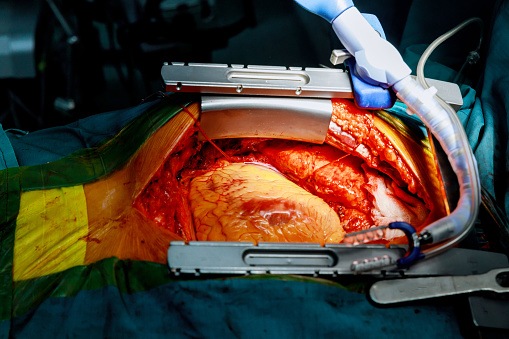
Poor outcomes following cardiac surgery are more common among patients with end-stage kidney disease (ESKD) receiving dialysis than in the non-dialysis population. However, according to Elias Bassil, MD, and colleagues, there are few data available on the impact of dialysis modality and the type of cardiac surgery.
During a virtual poster session at ASN Kidney Week 2021, the researchers reported results of an analysis of outcomes among patients with ESKD on hemodialysis or peritoneal dialysis undergoing coronary artery bypass graft and/or valvular cardiac surgery. The poster was titled Outcomes of ESKD Patients on Hemodialysis vs Peritoneal Dialysis Post Open Heart Surgery.
A total of 590 patients with ESKD on hemodialysis or peritoneal dialysis who underwent coronary artery bypass graft and/or valvular cardiac surgery at the Cleveland Clinic (Ohio) from 2009 to 2019 were identified using the Electronic Health Records-based Cardio-Thoracic Surgery registry. Chi-square was used to compare baseline demographics between the hemodialysis group and the peritoneal dialysis group; t-tests for categorical and continuous variables were used to compare baseline comorbidities. Kruskal-Wallis test, Chi-square, and Fisher’s exact tests were used to compare in-hospital death, hospital length of stay, intensive care unit length of stay, red blood cell transfusions required, and the incidence of post-operative complications, including pericardial effusions requiring intervention, gastrointestinal bleed, and sternal wound infections.
Of the 590 patients, 11% (n=62) were receiving peritoneal dialysis and 89% (n=528) were receiving intermittent hemodialysis; 47% (n=277) underwent valvular surgery only, 26.7% (n=158) underwent coronary artery bypass graft surgery only, and 26.3% (n=155) had combined valvular and coronary artery bypass graft surgery.
The dialysis modality groups were similar in baseline characteristics and comorbidities. Among the patients undergoing coronary artery bypass graft surgery only, patients in the peritoneal dialysis group had more pericardial effusions (12.5% vs 2.3%; P=.048) and more gastrointestinal bleeding (12.5% vs 2.2%; P=.046) than patients in the hemodialysis group.
The dialysis groups were similar in in-hospital mortality, hospital length of stay, intensive care unit length of stay, and sternal wound infections across the various surgeries. Post-surgery, 16 peritoneal patients were converted to hemodialysis; intent-to-treat analysis was applied for those patients.
In conclusion, the authors said, “In patients on maintenance dialysis, patients who underwent coronary artery bypass graft surgery, valvular surgery, and combined surgery had similar outcomes. Peritoneal dialysis patients appeared to experience more gastrointestinal bleeding and pericardial effusions requiring intervention in the coronary artery bypass graft surgery group.”
Source: Bassil E, Matta M, Liaqat A, et al. Outcomes of ESKD patients on hemodialysis vs peritoneal dialysis post open heart surgery. Abstract of a poster presented at American Society of Nephrology virtual Kidney Week 2021 (Abstract PO0879), November 2021.





 © 2025 Mashup Media, LLC, a Formedics Property. All Rights Reserved.
© 2025 Mashup Media, LLC, a Formedics Property. All Rights Reserved.